
Gordy Played Hero, Sent LSU To Team Title
“A team that possesses an unknown boy who can turn in a ‘pressure’ stunt like that deserves to win a team championship.” ~ Maxwell Stiles, Los Angeles Times
The team title at the 1933 NCAA Track & Field Championships in Chicago turned into a thrilling battle between programs at opposite ends of experience in the meet.
Nowhere was that more evident than in the concluding event, the pole vault.
Southern California was then in its early days of dominating the NCAA Championships (The Trojans were seeking a fourth team crown in eight years) and had the favorite in the event – world-record holder Bill Graber. His lofty personal-best of 14-4⅜ (4.37m) was more than six inches ahead of his then-meet-record standard of 13-10¼ (4.22m) set two years prior where he was crowned co-champion.
LSU was making its first appearance at the NCAA Championships and entered little-known Matt Gordy, who had a best of 13-4 (4.06m). A month earlier, he was part of a three-way tie to win the inaugural Southeastern Conference meet.
Teamwise, LSU surprisingly led USC 49-45 going into the pole vault. However, the Trojans had a path to team victory that lost a major obstacle when the four vaulters who cleared 13-6 (4.11m) did not include Stanford’s William Miller, the reigning Olympic gold medalist.
With Graber’s most-feared threat out of the competition, most felt if anyone could challenge him it would be one of the Midwest pair of Ernest Lennington (Illinois) and John Wonsowicz (Ohio State), both of whose 13-6 clearance matched their best from 1932 when they were among a six-way tie for second.
No one gave Gordy much chance, as his 13-6 clearance was not only a PR but also matched the best he’d ever done in practice.
With the bar raised to the meet-record height of just over 13-11 (4.24m) – PR territory for all but Graber – the USC senior sailed over on his second attempt. Only Gordy remained after Lennington and Wonsowicz missed their third attempts.
The team crown was also in the balance: A clearance by the Tiger senior meant Gordy and Graber would tie and LSU would win 58-54, while a miss would give Gordy a share of second and LSU would tie USC with 55 points each.
Gordy nudged the bar, but got over, bringing many fans to swarm the co-champion in celebration. As officials did not raise the bar any higher, the event and meet were over, giving the Tigers the team title that many consider one of the meet’s biggest upsets.
“A team that possesses an unknown boy who can turn in a ‘pressure’ stunt like that deserves to win a team championship,” wrote Maxwell Stiles of the Los Angeles Times.
The NCAA and collegiate track & field will mark a momentous milestone in the spring of 2021 -- the 100th anniversary of the NCAA Championships and with that, the NCAA Track & Field Championships. In June 1921, the University of Chicago hosted the first track & field championships in NCAA history.
This point can’t be emphasized enough: Not only was the event the first for NCAA track & field, but the first championships for any sport under the sponsorship of the NCAA.
To celebrate, over each of the next 365 days, the U.S. Track & Field and Cross Country Coaches Association (USTFCCCA) will celebrate moments, student-athletes, and coaches that have made a century’s worth of championships special. From humble beginnings to important historical milestones to the modern-day, collegiate track & field has evolved with the American society.
The 2021 edition of the NCAA Division I Outdoor Track & Field Championships begin with preliminary round action on May 27-29 in Jacksonville, Fla., and College Station, Texas. The championships final site and culmination of the celebration is slated for June 9-12, 2021 at the newly rebuilt Hayward Field in Eugene, Ore.
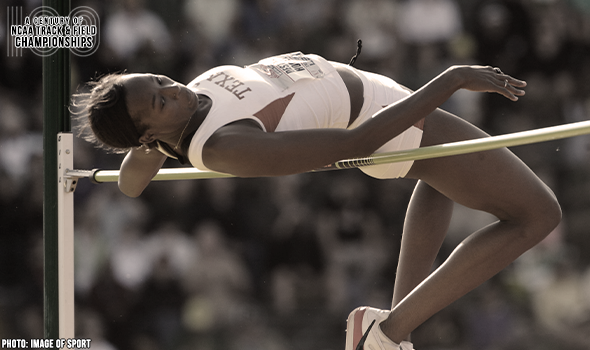
Texas’ Hooker High Jumped To NCAA Glory
Destinee Hooker won three career high jump titles at the NCAA DI Outdoor T&F Championships, including a massive victory in 2009 by more than two inches.
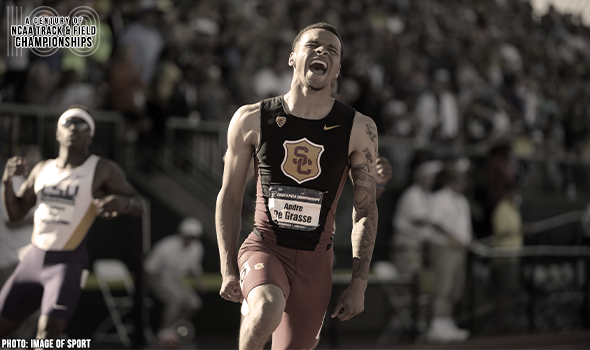
De Grasse Sprinted To Otherworldly Double
Andre De Grasse completed the 100-200 double at the 2015 NCAA DI Outdoor T&F Championships with scorching times: 9.75 (+2.7) in the 100; 19.58 (+2.4) in the 200.
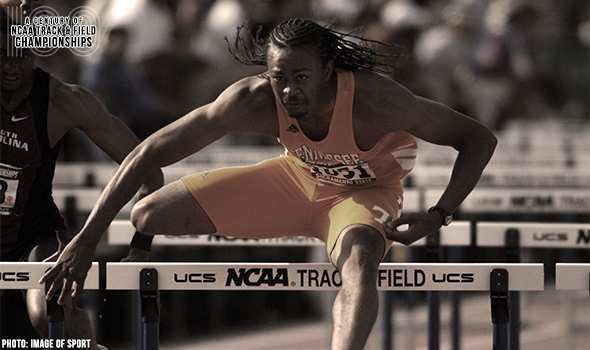
Merritt Broke Long-Standing 110H MR In 2006
Aries Merritt broke a 28-year-old meet record in the 110H when he won the crown at the 2006 NCAA DI Outdoor T&F Championships in 13.21.
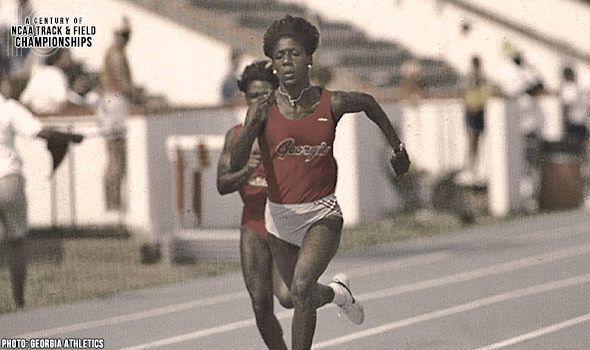
UGA’s Torrence Made NCAA History With Double
Gwen Torrence completed the 100-200 double at the 1987 NCAA DI Outdoor T&F Championships. Torrence was also the first woman to finish top-8 four times in the 100.
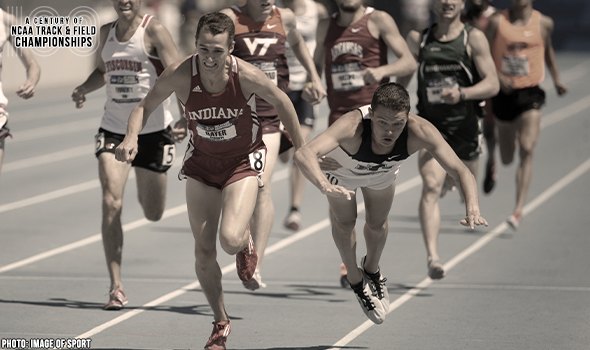
Bayer Gave It His All For NCAA 1500 Title
Andrew Bayer won the 1500 at the 2012 NCAA DI Outdoor Track & Field Championships in one of the closest finishes in meet history – 0.01 seconds.

Tipton Led 1-2-3 Oregon Finish In 1964 JT
Les Tipton led the first podium sweep of any event in the history of the NCAA Outdoor T&F Championships. Tipton and his Oregon teammates went 1-2-3 in the 1964 javelin.

K-State’s Jones Captured Heptathlon Crown In 2015
Akela Jones won the heptathlon at the 2015 NCAA DI Outdoor T&F Championships with 6371 points. That is the fourth-best score in both collegiate history & meet history.

Same Athletes, Same Result For LSU At NCAAs
The LSU foursome of Bennie Brazell, Pete Coley, Robert Parham, Kelly Willie swept the 4×100 & 4×400 crowns at the 2003 NCAA DI Outdoor T&F Championships.

Martin Won Distance Titles For Two Programs
Francis (Frank) Martin made history twice in the NCAA Outdoor Track & Field Championships.

FSU’s Williams Soared To Jumps Double In 2009
Kim Williams swept the horizontal jumps at the 2009 NCAA DI Outdoor T&F Championships. Williams was particularly dominant in the TJ, winning at 14.38m (47-2¼) & by nearly 2 feet.

